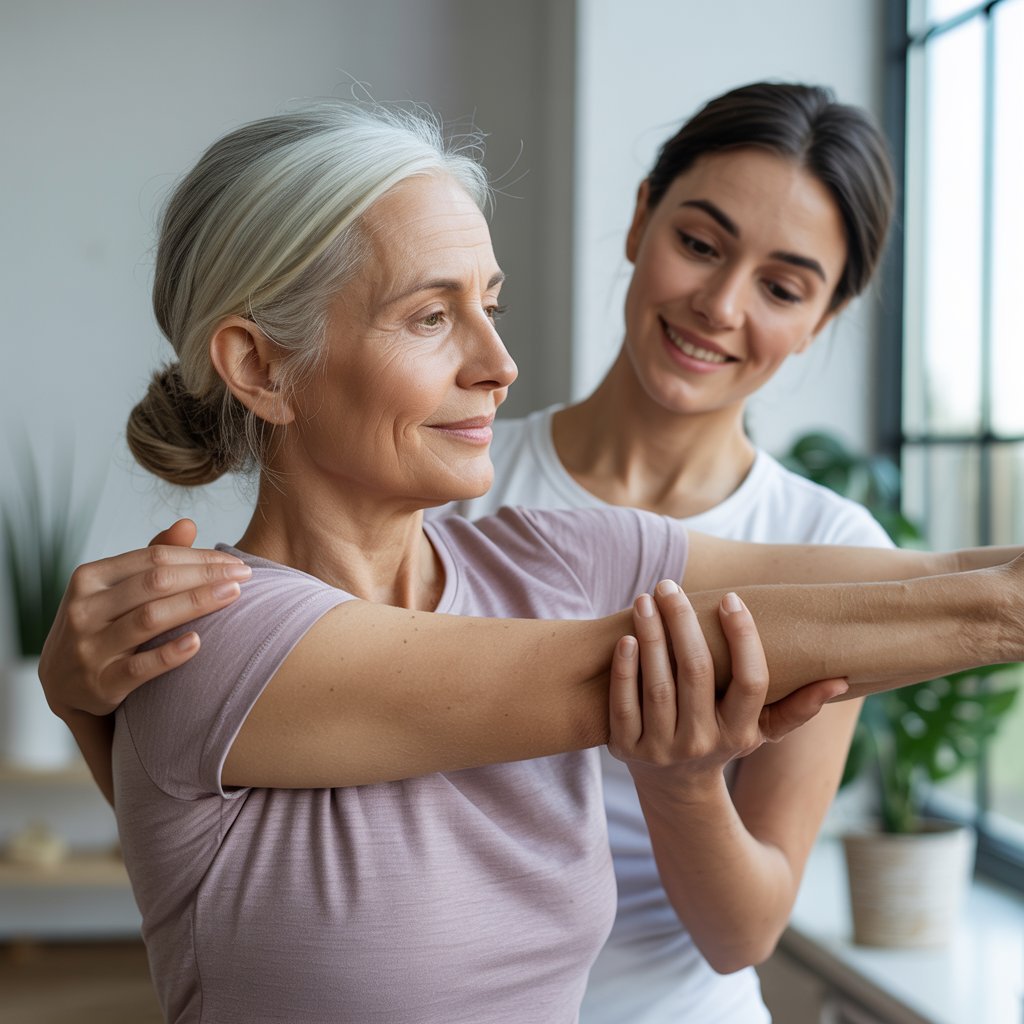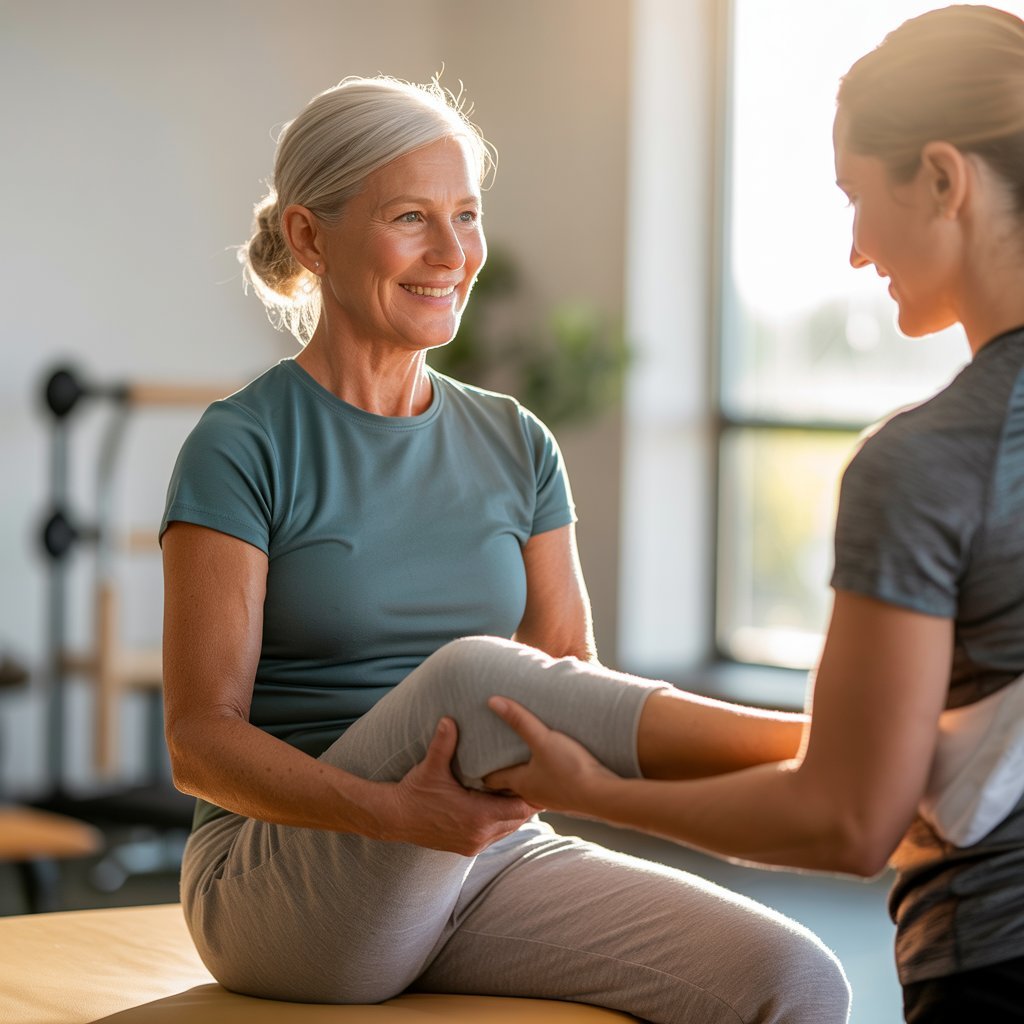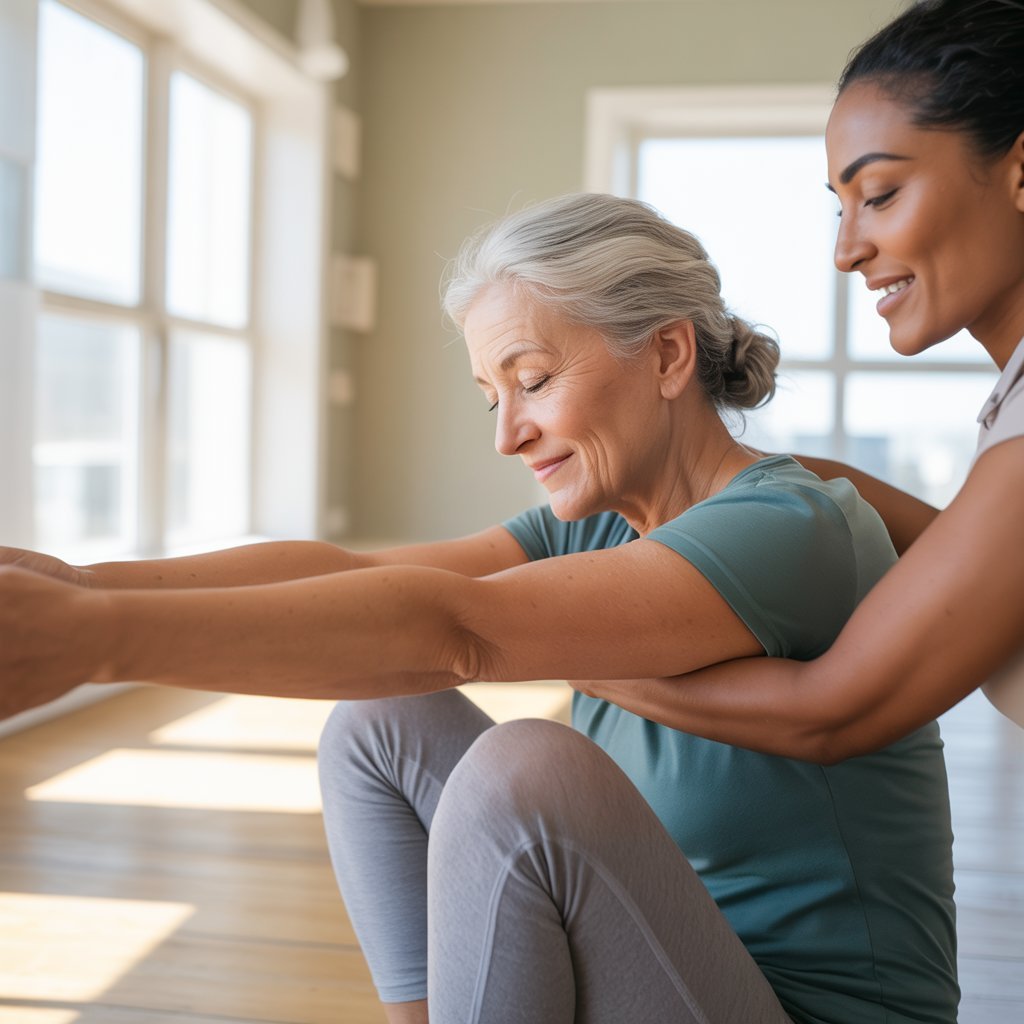Physical Address
304 North Cardinal St.
Dorchester Center, MA 02124
Physical Address
304 North Cardinal St.
Dorchester Center, MA 02124

Ever tried tying your shoelaces and felt like you were auditioning for a yoga class you never signed up for? Or maybe you’ve noticed that getting out of bed feels like assembling IKEA furniture – needlessly complicated and a bit painful. If you’re an active senior – or plan to be one for a long time – assisted stretch therapy might be your not-so-secret weapon for keeping life flexible, balanced, and pain-free. This guide combines expert insights, personal anecdotes, scientific facts, and real-life stories to show why assisted stretching is more than a wellness trend – it’s a movement built for people who want to keep moving.
Assisted stretch therapy is a hands-on approach where a trained professional helps you perform guided stretches that improve flexibility, joint mobility, and muscle recovery. Unlike self-directed stretching, this technique allows your body to relax completely while your therapist gently applies pressure and direction to enhance range of motion.
Imagine lying back on a cushioned table while someone safely stretches areas you didn’t even realise were tight. It’s stretching made smarter – not harder.
Assisted stretching differs from typical physiotherapy or massage. While physiotherapy often focuses on rehabilitation and massage addresses soft tissue tension, assisted stretching bridges both – offering proactive support for people who want to maintain and improve physical performance as they age.

Our muscles are protected by something called the “stretch reflex” – a natural response that limits overstretching. When we stretch ourselves, we often hit this reflex quickly, limiting our flexibility. But under the watchful hands of a trained stretch therapist, the body feels safe enough to let go. That’s when real improvement begins.
Also, as we age, collagen breaks down and our muscles lose elasticity. Assisted stretching can slow this process by promoting circulation, maintaining tissue health, and reducing stiffness caused by prolonged sitting or previous injuries. There’s also growing research showing that passive stretching, like what’s used in assisted therapy, can positively impact nervous system regulation. That means lower stress levels, improved breathing, and reduced inflammation throughout the body.
Let’s be honest – stretching might not sound glamorous, but its effects can be life-changing. Here’s what assisted stretching brings to the table:
| Benefits Table | |
| Benefit | How It Helps |
| Improved Flexibility | Reach shelves, tie shoes, move freely |
| Enhanced Balance | Reduces falls by improving proprioception |
| Reduced Pain & Stiffness | Relieves arthritis, back pain, and tension |
| Better Posture | Stand taller, breathe better |
| Increased Independence | Fewer limitations during daily tasks |
| Faster Recovery | After gardening, travel, or workouts |
| Improved Sleep | Less muscle tension, better rest |
| Boosted Mood & Confidence | Feeling mobile just feels good |
According to the Royal Society for the Prevention of Accidents, falls account for over 220,000 emergency hospital admissions in the UK every year1. One of the biggest benefits of assisted stretch therapy is its ability to dramatically reduce fall risk2.
A US-based pilot programme found that regular assisted stretching sessions improved seniors’ range of motion (ROM) and all performance measures, including those related to mobility within just eight weeks3.
Absolutely. In fact, it’s especially useful in these situations – when guided by a professional.
Therapists trained in geriatric care understand how to avoid compromising fragile bones or restricted joints. Sessions can be tailored to include more isometric stretches, minimal load, and seated positions.
Safety is key, so be sure to inform your therapist of any health issues. Good professionals will tailor every movement to your needs.
A typical 45–60-minute assisted stretch session may go like this:
You remain fully clothed, and no special fitness level is required – just a willingness to let someone help your body move better.
Many clients report leaving the session feeling lighter, taller, and more mobile.

Frequency depends on your goals and current mobility. Here’s a basic guide:
| Goal | Suggested Frequency |
| Improve flexibility | 2–3 times per week |
| Maintain flexibility | Once every 1–2 weeks |
| Rehab post-surgery | As advised by medical team |
| Budget-conscious clients | Monthly sessions with homework |
Even once a week can deliver results if you stay consistent. Stretching is a marathon, not a sprint.
Therapists often suggest complementing assisted sessions with daily self-care routines such as foam rolling, walking, or simple yoga poses.
Some like StretchMasters® even offer online follow-up tools or customised stretching plans you can follow from home to reinforce progress between visits.
How does it stack up against other options?
| Activity | Focus | Best For |
| Assisted Stretching | Flexibility, recovery | Seniors who want help with mobility |
| Strength Training | Bone density, muscle strength | Active seniors or those post-rehab |
| Yoga or Pilates | Core stability, balance | Those comfortable with mat work |
| Walking/Aerobics | Cardiovascular health | All seniors |
| Physiotherapy | Targeted injury recovery | Post-surgery or chronic issues |
Assisted stretching often complements these activities – enhancing recovery and reducing injury risk.
In fact, many therapists incorporate a blend of modalities, adding resistance bands or breathing techniques to maximise outcomes. In many cases, combining different approaches yields the best results. For example, someone recovering from surgery might begin with physiotherapy, then transition to strength training and then stretch therapy for long-term mobility support. At StretchMasters®, they offer a blend of both worlds – evidence-informed stretch therapy delivered by professionals with rehabilitation expertise.
Absolutely – and here’s how:
Falls aren’t just scary – they’re preventable. Assisted stretching plays a big role in maintaining stability5,6. Seniors in group settings often report improved confidence when navigating stairs, uneven pavements, and public transport – all vital for living independently.
Yes. In fact, for many seniors, pain relief is the first benefit they notice.
Here’s how it helps:
Jean, a 75-year-old client, shared that after four sessions, she was able to climb stairs without clutching the stair rail so hard. “I feel ten years younger,” she said. Other clients report fewer aches and pains, less back pain while sitting, and a noticeable ease in movements they had begun to avoid and a general improvement in confidence.
Here’s your checklist:
Trust your instincts. If the vibe is off or you feel rushed – walk away.
You can search terms like “assisted stretch therapy for active seniors near me” or check local wellness clinics that specialise in elder care. Trusted clinics like StretchMasters® specialise in working with active seniors and are known for their personalised approach to senior mobility and independence.
Consider asking your therapist for a receipt if you plan to claim through private insurance.
Some charities and local councils offer movement workshops for older adults that include elements of stretching – so don’t forget to ask around.
To extend the benefits between sessions, try:

Always move slowly and breathe deeply. If something hurts, stop.
You can also use aids like resistance bands, yoga straps, or foam blocks to make stretches more accessible and supportive.
Let’s face it – staying active gets trickier with age. But tricky doesn’t mean impossible. With assisted stretch therapy, you can:
Whether it’s gardening, golfing, travelling, or just playing with the grandkids—better flexibility gives you more freedom to enjoy your life.
So, if you’re tired of creaky mornings, stiff hips, or losing confidence in your balance, assisted stretch therapy might be just the nudge your body needs.
✅ Talk to your GP if you have existing health concerns
✅ Find a qualified stretch therapist in your area
✅ Book a trial session and see how your body feels
✅ Commit to a few sessions and track your progress
✅ Share your success – your story could inspire someone else
Because growing older shouldn’t mean growing stiffer.
Written by a stretch therapy specialist from StretchMasters®, passionate about helping seniors stay strong, mobile, and joyfully independent.
The information provided in this article, including any suggested stretches or routines, is intended for general educational purposes only and is not a substitute for professional medical advice, diagnosis, or treatment. The stretches described may not be suitable for everyone, particularly individuals with medical conditions, mobility limitations, or recent surgeries. Please consult your GP, physiotherapist, or a qualified healthcare provider before starting any new therapy or exercise program. Participation in any of the described activities is done at your own discretion and risk. Neither the author nor StretchMasters® accepts any responsibility for injury, loss, or damage resulting from the use or misuse of the information provided.